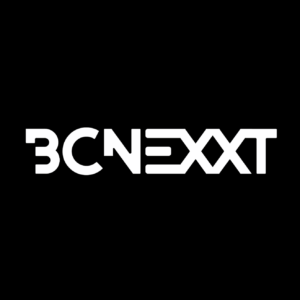Accedo – Is AVOD really all the rage?

Alex Wilkinson, Head of Sales, EMEA & LatAm, Accedo
AVOD has garnered a lot of attention over the past few years, with some sources forecasting that its global market will reach over 71 billion USD by 2030; a significant increase compared to the 28 billion USD reported in 2023. Changes in user spending habits and a challenged microeconomic climate have certainly played a role in accelerating adoption but do ad-funded business models really deserve all the hype? Keen to understand the latest consumer trends and preferences, Accedo recently carried out a survey of 2,000 global consumers to assess the appetite for ad-funded versus subscription-based video streaming services, also examining what constitutes a good ad experience. The findings were somewhat surprising.
Paid video service subscriptions still dominate
While many video service providers are switching to AVOD models, or introducing ad-funded tiers to attract new audiences, it would appear that SVOD still dominates amongst consumers. On a global scale, the majority (28%) of respondents in our survey say that they are currently subscribing to two paid services, with another 21% reporting that they are using three. This may not sound that surprising but when looking at AVOD service adoption, the majority of respondents (37%) report to be using only one service, with a very low percentage (11%) stating that they have access to three. While recent news reports may make it seem as if consumers are moving in droves to ad-funded options, our survey indicates that this is not necessarily the case, with subscription models still having the highest rate of usage.
These findings could suggest that it is not enough for video service providers to base their entire customer acquisition and retention strategy on reducing subscription costs with ad-funded offerings. While flexible monetization models are key in attracting new audiences, as well as building affinity with existing users, media companies also need to identify new and innovative ways to engage audiences and reduce churn.
Ad-funded must mean cheaper
It likely does not come as a surprise, but a large proportion (42%) of users on a global scale expect a video service with ad breaks to be between 30% and 50% cheaper than subscription based alternatives. Attitudes shift slightly across age brackets, where only a third of respondents who are 54 or older expect ad-funded services to be reduced by that same amount – compared to 45% of those younger than 35. Interestingly, only 23% of global respondents expect an ad-funded service to be entirely free.
Of course, few users would accept an ad-funded service to be priced at the same level as a subscription-based offering, but it is notable that less than a fourth expect it to be completely free of charge. This attitude could well be driven by the recent shift in service provision where many of the large and globally recognized video providers have launched ad-funded tiers which still come at a certain level of cost. It seems unlikely that smaller and less known industry players could have entered an already dense market with paid ad-funded offerings if the way had not already been paved by well-known brands having made moves to shift consumer expectation for the entire industry.
Getting the ad equation right can be tough
Across the globe, the primary concern regarding ad breaks in video services is that the same ads are repeated too often. Just over a quarter of respondents cite this as their main complaint, while a fifth say that they are more annoyed by ads that interrupt the program at the wrong time. Surprisingly, only 13% of users globally find the lack of relevance in ads to be the most irritating aspect which may suggest that providers of AVOD services cannot see targeted ad breaks as the only way to provide a good user experience. If our survey is anything to go by, consumers seem to lose patience if the ads are perceived as disrupting the main content – something which can be difficult for providers of these services to control.

So how can AVOD service providers balance on the thin line of providing a good user experience and an attractive proposition for advertisers? Most of these companies do have a say in the placement of ads – which seemingly is key for not annoying users – but have less control over whether or not the same ads are served to the same audience too often. Here, data should be leveraged to understand which ad placements have the least negative impact on the user experience. This will not only be important from a user retention perspective but also for providing advertisers with an attractive proposition where they have a chance to get in front of audiences at a time when they are the most engaged. And once again, the key lies in providing a compelling user experience in other aspects of the service so that customers leave it with a generally positive feeling – whether or not it comes with the presence of ads.
Is AVOD worth the hype?
2023 was a tough year for the video streaming industry and some studies point to global churn rates nearing the 50% mark. It may be easy to think that ad-funded models provide the answer to user acquisition and retention challenges but our research indicates that consumers are still using more SVOD than AVOD services. While introducing ad-funded offerings certainly can have many benefits (tackling churn can be one) lowering prices can rarely replace a steadfast focus on providing a stellar user experience. By taking a data-led and experimental approach to video service excellence, where focus is on understanding user behavior to build an impactful user experience, video service providers can both diversify revenue streams with the addition of new monetization models, while giving users many reasons to keep coming back for more.









